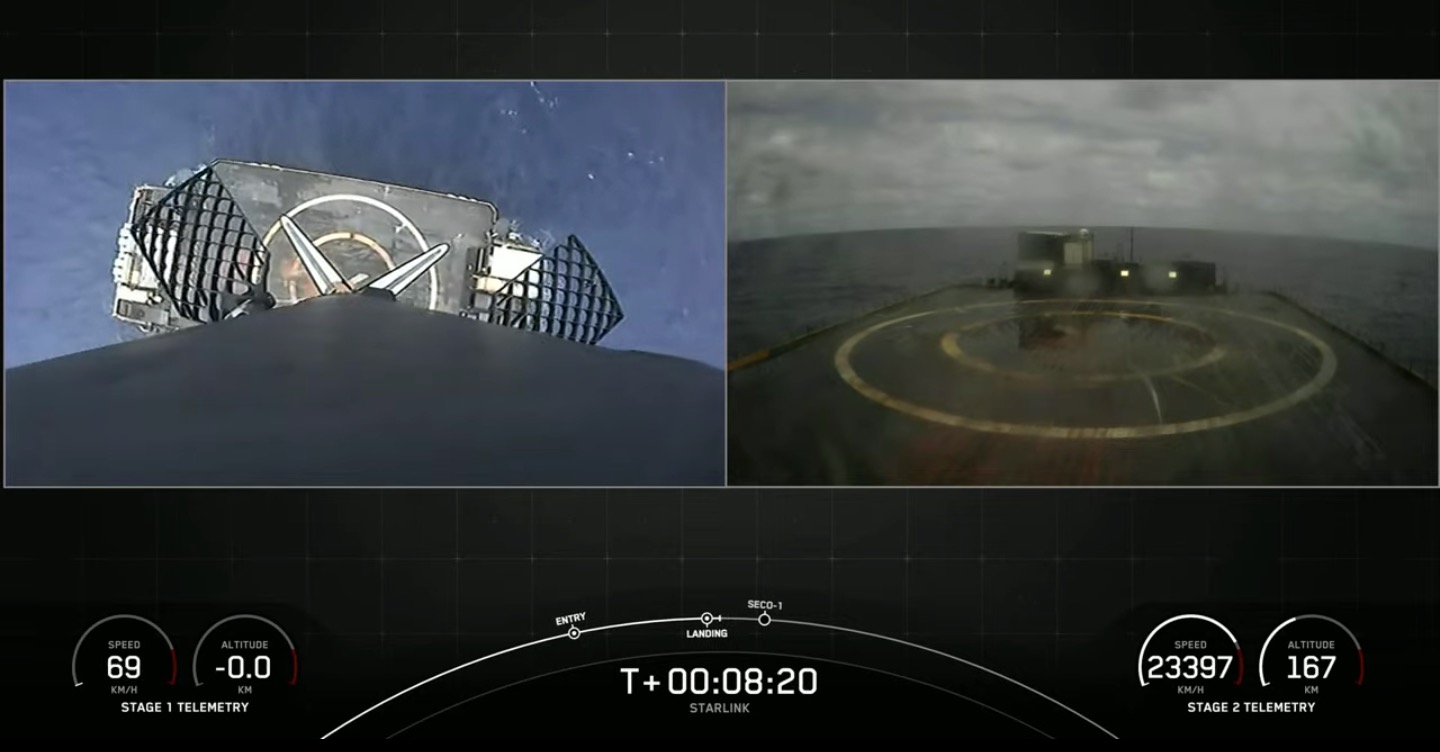SpaceX Falcon 9 rocket launches on record-tying 12th mission, lands on ship at sea
A SpaceX Falcon 9 rocket lifted off for a record-tying 12th time on Thursday (April 21) — and aced its 12th landing as well.
The two-stage Falcon 9 launched Thursday at 1:51 p.m. EDT (1751 GMT) from Florida's Cape Canaveral Space Force Station, carrying 53 of SpaceX's Starlink internet satellites to orbit.
It was the 12th liftoff for this particular Falcon 9 first stage, tying a SpaceX reuse record set just last month on a different Starlink launch. And it likely won't be this booster's last flight; about 8.5 minutes after liftoff, it came down for a safe landing on the SpaceX droneship Just Read The Instructions, which was stationed in the Atlantic Ocean off the Florida coast.
The Falcon 9's second stage, meanwhile, continued carrying the Starlink spacecraft to orbit. The 53 satellites deployed into their parking orbit as planned, SpaceX founder and CEO Elon Musk announced via Twitter about an hour and 20 minutes after liftoff.
Related: SpaceX's Starlink megaconstellation launches in photos

The Starlink megaconstellation provides internet service to customers around the world, including in Ukraine. In fact, SpaceX, in partnership with the U.S. Agency for International Development, has sent thousands of Starlink terminals to Ukraine to help the nation maintain communications capabilities, which have been degraded by the ongoing Russian invasion.
SpaceX has launched more than 2,300 Starlink satellites to date but plans to loft many more. The next-generation version of the megaconstellation could consist of up to 30,000 spacecraft, according to paperwork filed by the company.
Breaking space news, the latest updates on rocket launches, skywatching events and more!
And Starlink satellites have been going up at brisk pace recently; nine of the 15 missions that SpaceX has launched so far this year have been dedicated Starlink flights.
Another of those 15 was a crewed flight — the April 8 launch of the Ax-1 mission, which sent four private astronauts to the International Space Station. And SpaceX has another crewed flight coming up soon as well — the Crew-4 mission for NASA, which will send four professional spaceflyers to the orbiting lab for a lengthy stay.
Crew-4 is currently scheduled to lift off no earlier than April 26. That date recently slipped a few days due to bad weather in the projected splashdown zone for Ax-1, which pushed that mission's planned departure from the station from Tuesday (April 19) to Saturday (April 23). NASA officials have said they want at least a two-day window between Ax-1's splashdown and Crew-4's launch.
Editor's note: This story was updated at 2:10 p.m. EDT (1810 GMT) with news of successful liftoff, then again at 6 p.m. EDT (2200 GMT) with news of satellite deployment.
Mike Wall is the author of "Out There" (Grand Central Publishing, 2018; illustrated by Karl Tate), a book about the search for alien life. Follow him on Twitter @michaeldwall. Follow us on Twitter @Spacedotcom or on Facebook.

Michael Wall is a Senior Space Writer with Space.com and joined the team in 2010. He primarily covers exoplanets, spaceflight and military space, but has been known to dabble in the space art beat. His book about the search for alien life, "Out There," was published on Nov. 13, 2018. Before becoming a science writer, Michael worked as a herpetologist and wildlife biologist. He has a Ph.D. in evolutionary biology from the University of Sydney, Australia, a bachelor's degree from the University of Arizona, and a graduate certificate in science writing from the University of California, Santa Cruz. To find out what his latest project is, you can follow Michael on Twitter.
